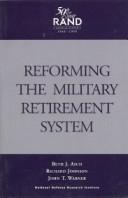| Listing 1 - 9 of 9 |
Sort by
|
Book
ISBN: 0128147792 0128147784 9780128147795 9780128147788 Year: 2019 Publisher: Amsterdam, Netherlands : Elsevier,
Abstract | Keywords | Export | Availability | Bookmark
 Loading...
Loading...Choose an application
- Reference Manager
- EndNote
- RefWorks (Direct export to RefWorks)
"Lithium-Ion Battery Chemistries: A Primer offers a simple description on how different lithium-ion battery chemistries work, along with their differences. It includes a refresher on the basics of electrochemistry and thermodynamics, and an understanding of the fundamental processes that occur in the lithium-ion battery. Furthermore, it reviews each of the major chemistries that are in use today, including Lithium-Iron Phosphate (LFP), Lithium-Cobalt Oxide (LCO), Lithium Manganese Oxide (LMO), Lithium-Nickel Manganese Cobalt (NMC), Lithium-Nickel Cobalt Aluminium (NCA), and Lithium-Titanate Oxide (LTO) and outlines the different types of anodes, including carbon (graphite, hard carbon, soft carbon, graphene), silicon, and tin. In addition, the book offers performance comparisons of different chemistries to help users select the right battery for the right application and provides explanations on why different chemistries have different performances and capabilities. Finally, it offers a brief look at emerging and beyond-lithium chemistries, including lithium-air, zinc-air, aluminum air, solid-state, lithium-sulfur, lithium-glass, and lithium-metal"--Back cover.
Digital
ISBN: 9780128147795 0128147792 Year: 2019 Publisher: Amsterdam, Netherlands ;Cambridge, MA Elsevier
Abstract | Keywords | Export | Availability | Bookmark
 Loading...
Loading...Choose an application
- Reference Manager
- EndNote
- RefWorks (Direct export to RefWorks)
Lithium-Ion Battery Chemistries: A Primer offers a simple description on how different lithium-ion battery chemistries work, along with their differences. It includes a refresher on the basics of electrochemistry and thermodynamics, and an understanding of the fundamental processes that occur in the lithium-ion battery. Furthermore, it reviews each of the major chemistries that are in use today, including Lithium-Iron Phosphate (LFP), Lithium-Cobalt Oxide (LCO), Lithium Manganese Oxide (LMO), Lithium-Nickel Manganese Cobalt (NMC), Lithium-Nickel Cobalt Aluminium (NCA), and Lithium-Titanate Oxide (LTO) and outlines the different types of anodes, including carbon (graphite, hard carbon, soft carbon, graphene), silicon, and tin. In addition, the book offers performance comparisons of different chemistries to help users select the right battery for the right application and provides explanations on why different chemistries have different performances and capabilities. Finally, it offers a brief look at emerging and beyond-lithium chemistries, including lithium-air, zinc-air, aluminum air, solid-state, lithium-sulfur, lithium-glass, and lithium-metal.
Book
ISBN: 0443138087 Year: 2024 Publisher: San Diego : Elsevier Science & Technology,
Abstract | Keywords | Export | Availability | Bookmark
 Loading...
Loading...Choose an application
- Reference Manager
- EndNote
- RefWorks (Direct export to RefWorks)
Book
Year: 1994 Publisher: Santa Monica, CA : RAND Corporation,
Abstract | Keywords | Export | Availability | Bookmark
 Loading...
Loading...Choose an application
- Reference Manager
- EndNote
- RefWorks (Direct export to RefWorks)
A primary goal of military compensation is to enable the military to meet its manning objectives for force size, composition, and wartime capability. To attain these objectives, compensation must be appropriately structured to attract, retain, and motivate personnel at a reasonable cost, even when national security goals are changing. A key question facing military manpower and compensation managers is, How should military compensation be structured? Although past studies have narrowly focused on the relationship between compensation and retention, less attention has been paid to whether the military compensation system induces the best individuals to stay and seek advancements, and whether it motivates effective work. This highly technical report addresses the issue of how military compensation should be designed in light of these considerations. It presents research that aids us to develop a model of compensation in a large, hierarchical organization such as the military, a model that permits an analysis of the issues surrounding the design of military compensation. The report reaches four conclusions: (1) In a hierarchical system, pay spreads need to rise with rank to provide personnel with continuing incentives to work hard and seek promotion, and to induce the most able personnel to stay; (2) intragrade pay should be somewhat contingent upon performance and not be provided lockstep with seniority; (3) up-or-out rules are necessary to induce the separation of unpromotable personnel when pay is set administratively; and (4) retired pay may be offered for a number of reasons. The report also begins to evaluate the current military compensation system in light of the model, finding that the system appears more aimed at attracting and retaining personnel than at providing them with effective incentives to work hard and seek advancement.
United States --- United States --- Armed Forces --- Pay, allowances, etc. --- Armed Forces --- Personnel management.
Book
Year: 1994 Publisher: Santa Monica, CA : RAND,
Abstract | Keywords | Export | Availability | Bookmark
 Loading...
Loading...Choose an application
- Reference Manager
- EndNote
- RefWorks (Direct export to RefWorks)
Summarizes the authors' previously developed theoretical model of compensation in a large, hierarchical organization like the military that permits an analysis of the issues surrounding the design of military compensation. Presents an empirical version of that model and uses it to evaluate the current and alternative military retirement systems in terms of their implications for force structure, cost, and productivity (i.e., personnel effort and ability sorting); the implications for the current military compensation system, and the implications of several proposals (including several of the authors' own design) that change the structure of the military retirement system. The authors estimate that under certain circumstances the proposed systems would permit the Department of Defense to maintain forces at least as capable as today's at no higher cost.

ISBN: 0585361037 9780585361031 0833026895 9780833026897 Year: 1999 Publisher: Santa Monica, Calif. : Rand,
Abstract | Keywords | Export | Availability | Bookmark
 Loading...
Loading...Choose an application
- Reference Manager
- EndNote
- RefWorks (Direct export to RefWorks)
Early retirement incentives --- Government - U.S. --- Law, Politics & Government --- Political Institutions & Public Administration - U.S., Executive Branch --- Incentives, Early retirement --- Retirement incentives, Early --- Incentives in industry --- Postemployment benefits --- Civil Service Retirement System (U.S.) --- Federal Employees' Retirement System (U.S.) --- FERS (Federal Employees' Retirement System) --- United States. --- CSRS --- United States --- Officials and employees --- Pensions. --- Pensions, Civil service

ISBN: 0585380066 9780585380063 0833024639 9780833024633 Year: 1998 Publisher: Santa Monica, CA Rand
Abstract | Keywords | Export | Availability | Bookmark
 Loading...
Loading...Choose an application
- Reference Manager
- EndNote
- RefWorks (Direct export to RefWorks)
The authors summarize the principal features of a model of military compensation developed by the authors earlier and use it to analyze the effects of converting the current military retirement system to an alternative system patterned after the Federal Employees Retirement System. The three parts of the alternative system are a retirement plan similar to that for civil service employees, a 7 percent across-the-board pay increase to counteract mandatory contributions under the new plan, and a set of retention bonuses targeted to address any retention problems. Because the alternative system may not create the services' desired seniority profiles, a larger set of pay raises, retention bonuses, and/or separation payments would be added. In addition, the authors recommend that pay raises be skewed--be higher in the higher ranks. The authors consider the implications of this proposal in terms of the effects on cost, force size and structure, productivity, and force management flexibility.
Military pensions --- Pensions --- Military Administration --- Military & Naval Science --- Law, Politics & Government --- Compensation --- Pension plans --- Retirement pensions --- Superannuation --- Retirement income --- Annuities --- Social security individual investment accounts --- Vested benefits --- Military compensation --- Naval pensions --- Pensions, Military --- Pensions, Naval --- Soldiers --- Veterans' benefits --- Veterans' pensions --- War pensions --- Computer simulation. --- Computer simulation --- Federal Employees' Retirement System (U.S.) --- FERS (Federal Employees' Retirement System) --- United States.
Book

ISBN: 1598753169 Year: 2001 Publisher: Santa Monica, CA : RAND Corporation,
Abstract | Keywords | Export | Availability | Bookmark
 Loading...
Loading...Choose an application
- Reference Manager
- EndNote
- RefWorks (Direct export to RefWorks)
This documented briefing addresses the questions of whether military compensation is adequate to enable the military services to meet their manpower requirements now and in the future and whether action to change military compensation is required now. Major military pay legislation waspassed in 1999 and took effect in Fiscal Year 2000, so there is also a question of whether that pay action is sufficient to meet both short-term and long-term challenges in recruiting, retaining, and motivating personnel.
United States --- Armed Forces --- Pay, allowances, etc. --- Personnel management.
Book
ISBN: 1598753185 Year: 2001 Publisher: Santa Monica : RAND Corporation,
Abstract | Keywords | Export | Availability | Bookmark
 Loading...
Loading...Choose an application
- Reference Manager
- EndNote
- RefWorks (Direct export to RefWorks)
Between January 1992 and October 1995, the Department of Defense offered a voluntary separation incentive to mid-career personnel to induce them to leave service as a means of facilitating the defense draw down. This incentive, the VSI/SSB (Voluntary SeparationIncentive/Special Separation Benefit) program, was offered to thosewith specific combinations of occupation, rank, and years of service(YOS).
| Listing 1 - 9 of 9 |
Sort by
|

 Search
Search Feedback
Feedback About UniCat
About UniCat  Help
Help News
News